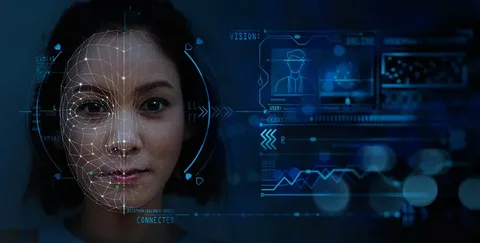Exploring AI Face Recognition Online: Benefits, Risks, and the Future of Digital Identity
Introduction to AI Face Recognition Technology
With the rapid growth of artificial intelligence, identification and verification of individuals have become easy and convenient tasks online. One of the biggest technological breakthroughs in the use of identity through the digital age is that which permits people to identify from images of the individual concerned. A complex AI face recognition system involving sophisticated algorithms that determine features for a match and are applicable on a wide range of platforms ranging from unlocking your smartphones to an online transaction for customer verification. The rise in demand for secure and convenient identity verification would also heighten the impacts of AI-powered face finders and face ID finder tools. However, that is matched with a side risk and concern for privacy, security, and ethics.
Online AI Face Recognition Process:
There are several essential steps taken to perform AI face recognition online:
Face Detection
Identify and separate a face within an image or video feed.
Feature Extraction
It searches for specific facial features, such as the distance between the eyes, shape of the nose, and contour of the face, which are combined to create a unique faceprint.
Face Matching
The faceprint thus created is compared with records existing in the database. Therefore, this would enable verification or identification of a person.
These algorithms have gone even faster, and AI face recognition and search are highly improved and accessible. They use face ID finders to unlock your phones, secure accounts, or track people on the web. However, with more accuracy and performance achieved using large datasets of images and faces, these open data privacy issues and room for misuse.
Benefits of AI Face Recognition
Enhanced Security and Anti-Fraud Measures
One of the other major benefits of AI facial recognition online is that of enhancing security. With features based on unique facial differences, it lowers the chances of identity fraud by authenticating access to an electronic device or account only available to the real owner. This is very significant in financial services whereby frauds are the chief concern. AI face finder and face search also help with another layer of verification to guard personal identity information.
Personalized User Experiences
AI face recognition is used in e-commerce and social media to personalize user experiences. Using facial analysis, a company can adapt recommendations to a user’s age, gender, or emotional state. For example, some applications apply personalized filters by using face recognition or offer makeup products based on facial features.
Access to Digital Services
Face recognition has helped simplify easy access to various digital applications, thus doing away with the need for passwords and PINs. This technology is more convenient for users, as they can log into banking apps, online shopping accounts, and all other secured digital platforms quickly. It has also made procedures like checking into a flight or verifying an ID easier.
Potential Risks and Concerns with Online Face Recognition
Privacy and Data Security Issues
AI face recognition over the internet requires gigantic storage of face data related to severe privacy issues. People rarely know how data is stored, shared, and processed, which usually gets misused. Big data of face data leave such massive databases vulnerable to hackers and unauthorized access, breaching data security.
Bias and Inaccuracy Risks
Although AI has made face recognition systems highly accurate, there are still biases that occur. Studies have shown that these algorithms may perform differently along gender and racial lines, leading to inaccurate matches or exclusions. Such bias can lead to unintended discrimination, especially in hiring or law enforcement with AI face recognition.
Surveillance and Ethical Implications
The other significant ethical issues are in surveillance due to AI face recognition technology. Governments and companies can track people without their consent, violating personal freedom. Surveillance systems based on face recognition, such as public CCTV cameras, have raised debates about privacy rights, creating an ongoing need for regulation to prevent misuse.
Applications of Face Recognition Across Industries
Social Media and Content Moderation
Many social media applications now employ AI face recognition to identify and tag people in pictures, making it easier for users to organize and share content. Face recognition also helps in content moderation through the identification and removal of unauthorized images, thus enhancing user safety.
Online Shopping and Payment Verification
AI face recognition is increasingly becoming common in online shopping and payment systems, where it provides an additional layer of authentication.
Law Enforcement and Public Safety
Police utilize AI face recognition to detect suspects or missing individuals through surveillance camera footage analysis during criminal investigations. Although AI face recognition technology does protect public safety, there are privacy issues associated with this technology. People’s activities may be tracked involuntarily.
Privacy and Regulation: Safeguarding Personal Information
Existing Data Protection Law
Europe’s general data protection regulation protects the rights of individuals concerning their personal information and biometric data. The regulation stipulates that one has to get the end user’s consent before obtaining facial data and processing it. That way, the privacy of the end user is guaranteed in the best possible manner.
Role of transparency and consent
Transparency and consent will be the key to the responsible use of AI face recognition online. Users must know how their data will be used, stored, and protected. Obtaining consent before collecting face data will be necessary for building trust and making users feel comfortable using these services.
Best Practices for Responsible Use
Companies employing AI face search online should make proper use of best practices that include data anonymization, encryption of facial images, and continuous data security audits. A reduction in the data retention period, coupled with an opt-out system, could help minimize issues related to privacy and increase customer confidence in these services.
Future of AI Face Recognition Online
With advancing technology, new applications and improvements in AI face recognition are going to emerge. For example, AI-based face search and face finders are going to be faster and more accurate. Improvements in 3D facial recognition and live facial tracking will also be expected. Such innovations can be further applied to the healthcare sector where facial analysis might diagnose certain conditions.
Balancing Convenience with Privacy
The challenge for AI developers and regulators is to balance convenience with privacy. While face recognition makes access to services easy, users need to be assured that their data will not be misused. PETs and decentralized storage solutions may provide a way forward.
Predictions for Regulation and Adoption
With the increased penetration of AI face recognition technology into our lives, laws must be tightened. Regulations related to face recognition would come into effect in different forms in most countries to use this technology responsibly. Such widespread use in stores, security systems, etc will further propel innovation but may lead to greater emphasis on issues of ethics.
Conclusion
Navigating the Path Forward in Digital Identity
Such convenience, safety, and personalization make AI face recognition online stand as a landmark in managing digital identity. What is more pressing at the moment, though is building strong privacy safeguards coupled with ethical standards because this integration becoming a normal affair in life. The implications of using face recognition mean the users need to be informed, and companies also commit responsibly to data practice as they provide a secure space in the digital world that is trustworthy. The future advancement of technology in face recognition will be well balanced against the privacy of users; this is the key to the full realization of AI-powered face recognition.









